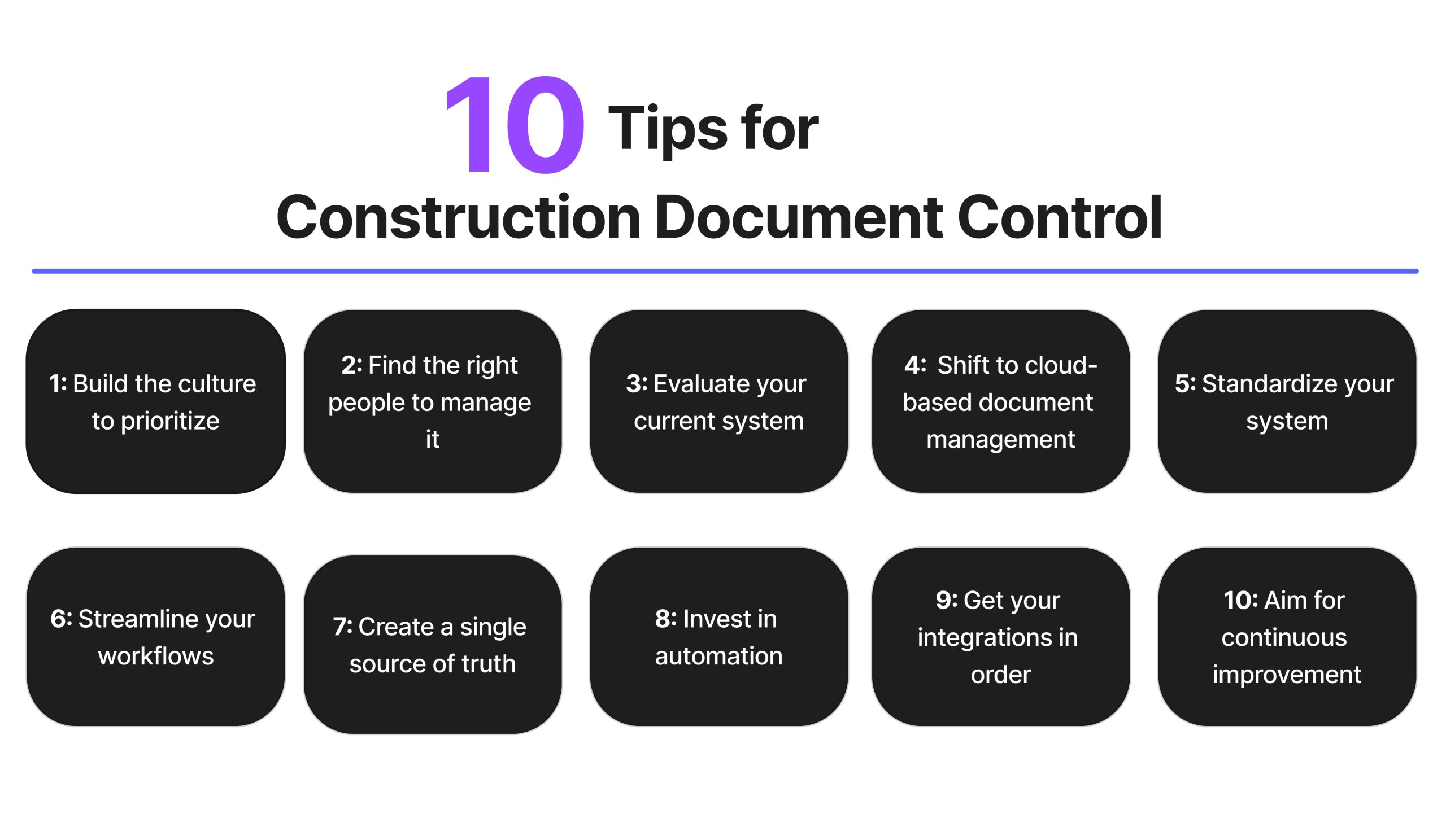Building Better Projects: The Duty of Construction Document Management in Success
Wiki Article
Optimizing Task Cooperation: Engineer's Ideal Practices in Building File Management
In the elaborate realm of building projects, the efficient monitoring of building and construction papers stands as a cornerstone for success. Architects, with their thorough attention to information and innovative design solutions, are entrusted with orchestrating a symphony of stakeholders, sources, and timelines. Nonetheless, among this intricacy exists a vital inquiry: how can designers streamline partnership processes to enhance task outcomes? By exploring key methods such as leveraging cloud-based systems, developing durable interaction procedures, and guaranteeing data safety, architects can elevate their document administration methods to new heights.Leveraging Cloud-Based Platforms
Leveraging cloud-based systems is a fundamental technique for modern engineers in enhancing construction paper monitoring processes. By transitioning from standard paper-based systems to cloud options, designers can simplify partnership, enhance file availability, and enhance general job efficiency. Cloud-based platforms supply engineers the ability to shop, share, and update construction papers in real-time, making sure that all group members have access to one of the most existing info no matter their area. This availability promotes seamless interaction and sychronisation amongst job stakeholders, resulting in fewer mistakes and hold-ups in the construction process.Additionally, cloud-based systems give a secure setting for saving delicate task information, using security, routine back-ups, and individual consent setups to shield data integrity. Architects can also gain from the scalability of cloud services, permitting them to change storage space ability and performance based upon project requirements. In general, leveraging cloud-based systems encourages architects to maximize their construction paper monitoring procedures, driving better cooperation, performance, and success in their jobs.
Carrying Out Variation Control Systems
Having actually developed the benefits of cloud-based platforms in construction document monitoring, architects can currently improve their file control procedures by applying Variation Control Equipment. Version Control Solution (VCS) are important devices that track adjustments in files, making sure that employee are always collaborating with the most recent and most precise details. By implementing VCS, architects can keep a centralized database where all project files are stored, making it possible for seamless partnership while decreasing the danger of mistakes and variation disputes.This feature is specifically useful in building and construction projects where style versions and adjustments are usual. This openness not just boosts responsibility however additionally aids in fixing disputes or discrepancies that might occur during the job lifecycle.
Developing Interaction Methods
To make certain effective and effective job control, designers should develop clear and durable interaction methods within their building and construction document monitoring processes. This platform could be a job monitoring software, email threads, or cloud-based storage services.Furthermore, interaction methods should likewise consist of standards on just how to deal with conflicts, modification orders, and immediate issues that may emerge during the job lifecycle. Developing my response a structured approach to interaction ensures that all stakeholders are on the same web page, advertises transparency, and eventually adds to the successful conclusion of the construction project.
Utilizing BIM Software Program for Coordination
BIM software plays a critical duty in improving control among task team participants in the construction industry. Building Details Modeling (BIM) facilitates partnership by offering a centralized platform where engineers, engineers, specialists, and various other stakeholders can collaborate in a coordinated way. With BIM software application, project participants can access and update a common design which contains thorough details concerning the structure design, construction parts, and task timetables.
Moreover, BIM software allows real-time partnership and interaction among group members, despite their physical place. With cloud-based BIM systems, job stakeholders can access the most up to date job information, track changes, and make informed choices immediately. Generally, leveraging BIM software program for sychronisation enhances task efficiency, efficiency, and ultimately results in successful project end results.
Ensuring Data Safety And Security and Compliance
In the realm of building file management, protecting data integrity and ensuring governing compliance are paramount factors to consider for designers and various other task stakeholders. Engineers should implement robust security steps to secure sensitive project information from unauthorized access or breaches. Utilizing protected cloud storage space services with security methods and accessibility controls can assist mitigate dangers connected with information burglary or loss. Routinely upgrading software and systems, conducting protection audits, and supplying personnel training on data security ideal practices are necessary steps in maintaining a safe and secure setting for construction paper administration.
Final Thought
In final thought, designers can enhance project collaboration in building document administration by leveraging cloud-based systems, carrying out version control systems, developing interaction procedures, making use of BIM software for sychronisation, and making certain information protection and compliance. These ideal techniques help simplify the building process, boost communication amongst job stakeholders, and improve effectiveness in project delivery. By adhering to these standards, designers can successfully take care of construction records and Home Page help with successful job end results.Through BIM software application, job individuals can access and update a shared model that consists of comprehensive information about the building design, construction parts, and task timetables.
With cloud-based BIM systems, task stakeholders can access the newest job info, track modifications, and make educated decisions promptly - construction document management. Overall, leveraging BIM software for coordination improves project performance, productivity, and eventually leads to effective project end results
In final thought, designers can enhance project collaboration in building document monitoring by leveraging cloud-based platforms, implementing variation control systems, establishing communication methods, making use of BIM software for coordination, and ensuring data security and conformity. These ideal methods assist streamline the construction process, enhance interaction amongst job stakeholders, and improve efficiency in task delivery.
Report this wiki page